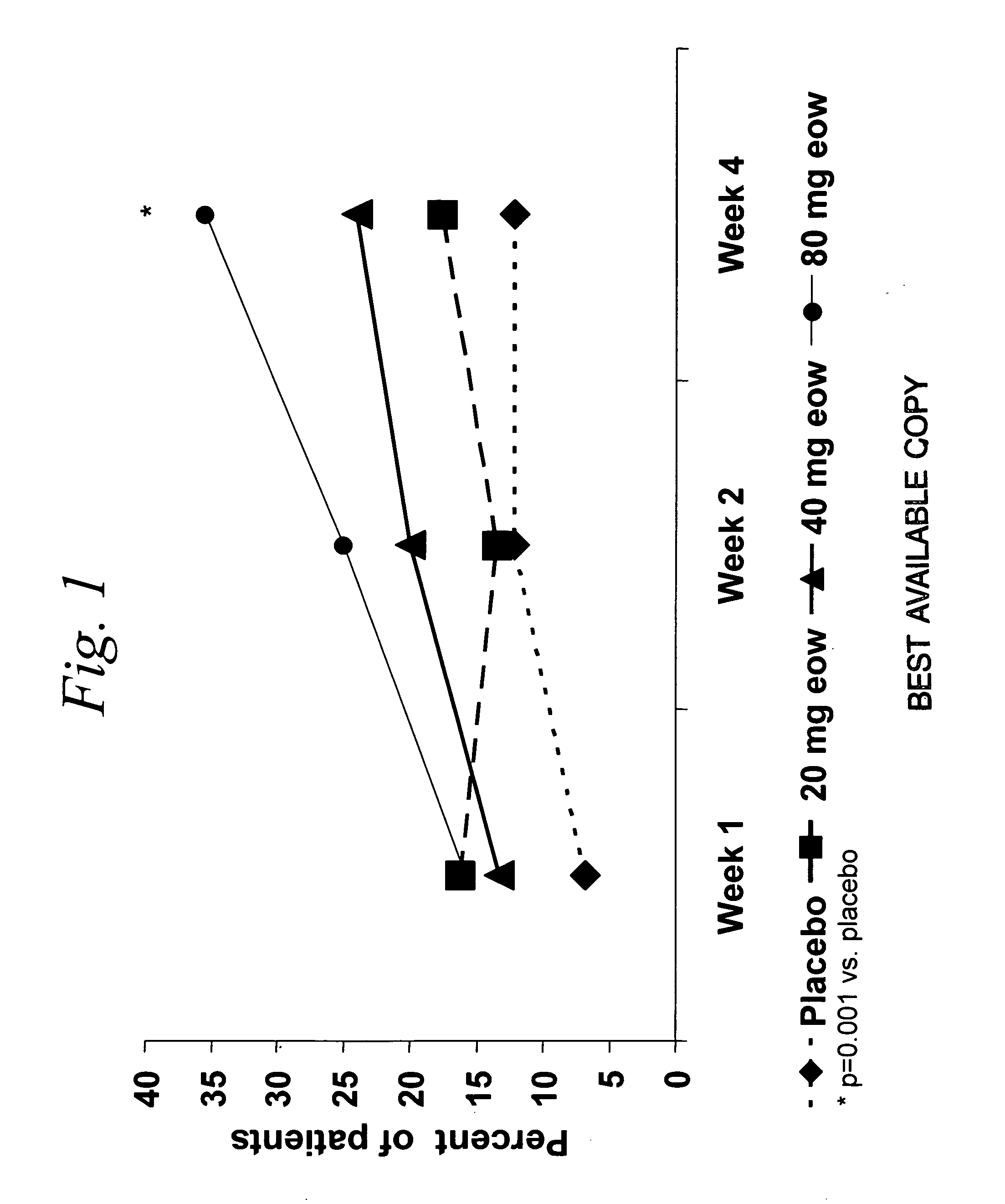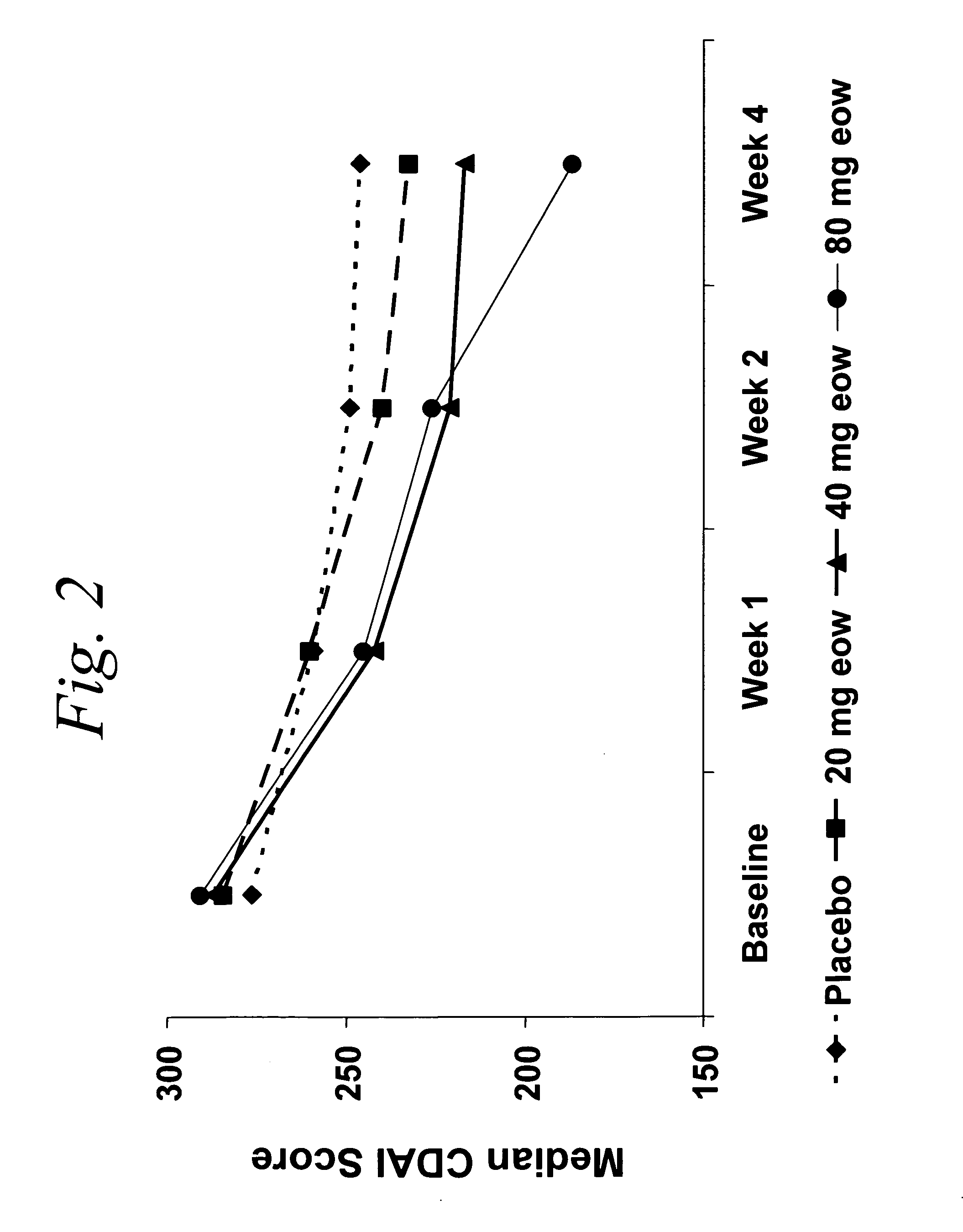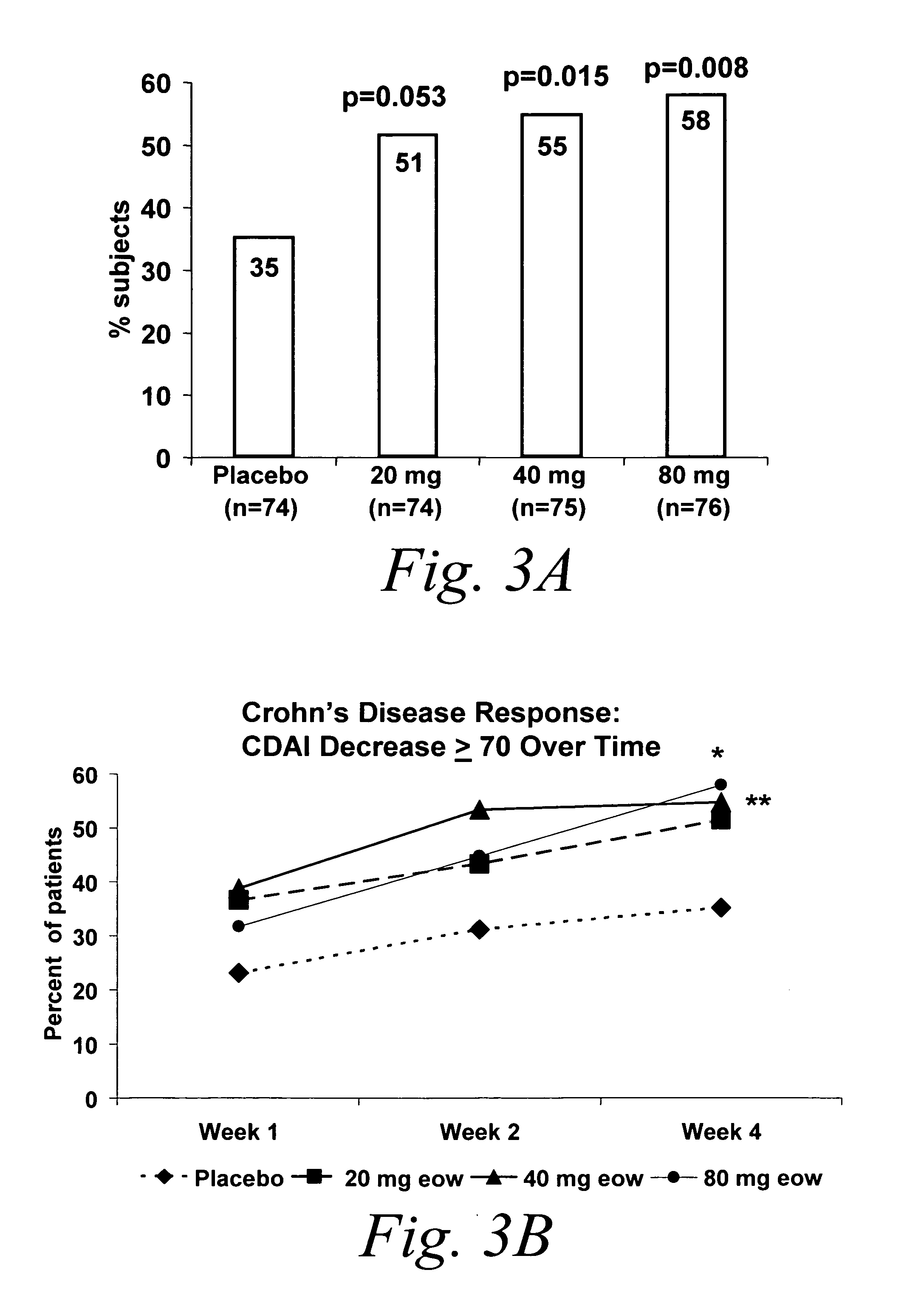Multiple-variable dose regimen for treating TNFalpha-related disorders
a multi-variable, dose regimen technology, applied in the direction of immunological disorders, drug compositions, peptides, etc., can solve the problems of difficult treatment of crohn's disease, significant side effects, and current compounds and regimens that do not completely abate the inflammatory process, so as to improve the severity index of the psoriatic area and reduce the formation of psoriatic plaques.
- Summary
- Abstract
- Description
- Claims
- Application Information
AI Technical Summary
Benefits of technology
Problems solved by technology
Method used
Image
Examples
example 1
Study of Efficacy of Multiple-Dose Therapy for Treatment of Crohn's Disease
Multiple-Variable Dose Treatment of Crohn's Disease With D2E7
[0448] Studies were performed to determine the efficacy of a multiple-variable dose regimen of a TNFα inhibitor, namely D2E7 (also referred to as adalimumab and Humira®), for treating Crohn's disease. Efficacy and tolerability of D2E7 in the treatment of patients with active Crohn's disease were evaluated in a randomized, double-blind, placebo-controlled, multicenter study.
[0449] In this study, two hundred ninety-nine patients without previous exposure to TNF-antagonists and with active Crohn's Disease were selected. Crohn's disease in each patient was confirmed by endoscopic or radiologic evaluation. Subjects were randomized equally to one of four treatment groups (three treatment groups and one placebo group). Eligible subjects included men and women between 18 and 75 years of age having a diagnosis of Crohn's disease for more than four months...
example 2
Additional Study of Efficacy of Multiple-Dose Therapy for Treatment of Crohn's Disease
Multiple-Variable Dose Treatment of Crohn's Disease With D2E7
[0457] A study was performed to assess the tolerability and clinical benefit of a multiple-variable dose treatment using a TNFα inhibitor, specifically D2E7, in adult patients with Crohn's disease who had previously received and responded to a different TNFα inhibitor. The study included patients who had previously received the chimeric anti-TNF antibody infliximab, but who no longer have a sustained response and / or tolerance to infliximab.
[0458] Patients who had lost responsiveness or developed intolerance (acute or delayed infusion reactions) were treated with D2E7 80 mg at week 0 and 40 mg at week 2. All treatments were subcutaneous. Antibodies to infliximab (ATI) were determined at baseline (Prometheus Laboratories, San Diego, Calif.). Crohn's disease activity index (CDAI) scores, presence of fistulas, and C-reactive protein (CRP)...
example 3
Efficacy of Multiple-Dose Therapy Using TNFα Inhibitor for Treatment of Psoriasis
Multiple-Variable Dose Treatment of Psoriasis With D2E7
[0461] A study was performed to determine the efficacy of a multiple-variable dose regimen of D2E7 for treating psoriasis. Efficacy and tolerability of D2E7 in the treatment of patients with moderate to severe chronic plaque psoriasis were evaluated in a randomized, double-blind, placebo-controlled multicenter study.
[0462] In this study, one hundred forty-eight adult patients with a diagnosis of moderate to severe psoriasis for at least one year were selected to receive multiple-variable dose treatment. Patients were also selected based on an affected body surface area (BSA) of ≧5%. Subjects were randomized equally to one of three groups (two treatment groups and one placebo).
[0463] At baseline (Week 0) patients in both treatment groups received an induction dose of 80 mg of D2E7. Patients in the first treatment group subsequently received a tr...
PUM
| Property | Measurement | Unit |
|---|---|---|
| Fraction | aaaaa | aaaaa |
| Time | aaaaa | aaaaa |
| Mass | aaaaa | aaaaa |
Abstract
Description
Claims
Application Information
 Login to View More
Login to View More - R&D
- Intellectual Property
- Life Sciences
- Materials
- Tech Scout
- Unparalleled Data Quality
- Higher Quality Content
- 60% Fewer Hallucinations
Browse by: Latest US Patents, China's latest patents, Technical Efficacy Thesaurus, Application Domain, Technology Topic, Popular Technical Reports.
© 2025 PatSnap. All rights reserved.Legal|Privacy policy|Modern Slavery Act Transparency Statement|Sitemap|About US| Contact US: help@patsnap.com



